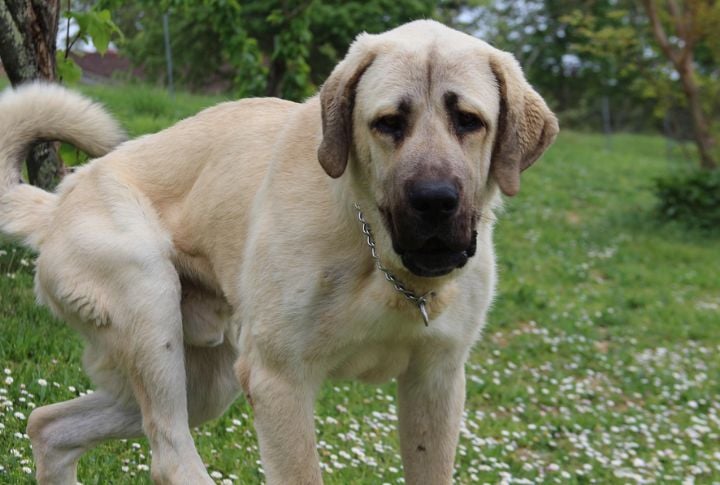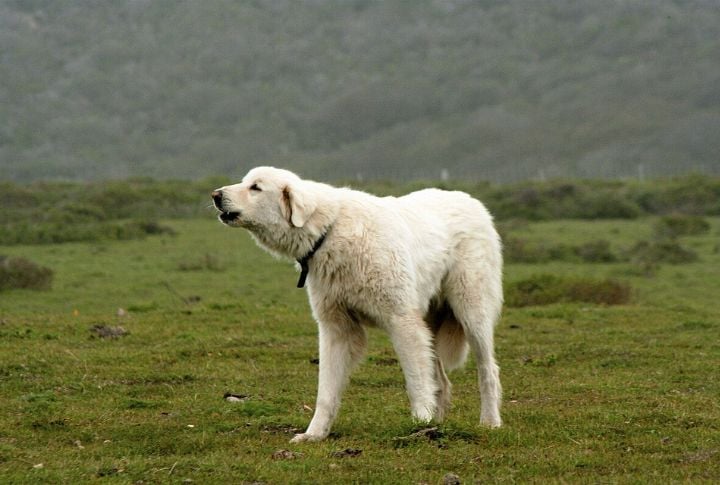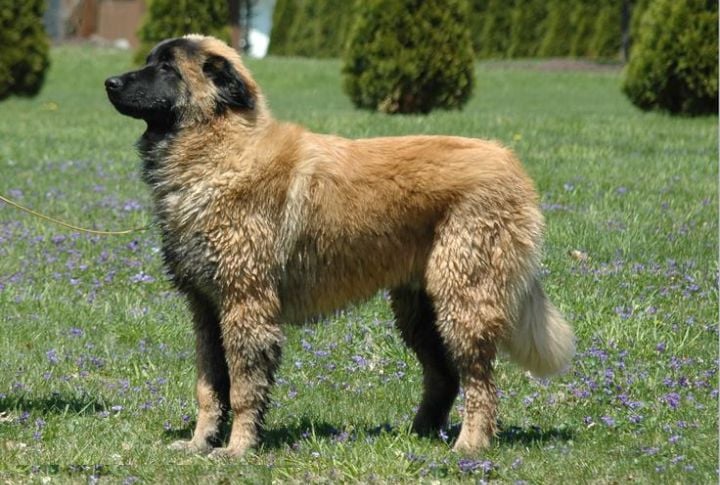15 Survival Dogs That Won’t Bow To Big Cats

These dogs weren’t bred for looks or tricks. They were trusted to hold the line when predators closed in. Built for harsh conditions and serious work, each one earned its place through action, not obedience. No panic. No retreat. Here are 15 survival dogs that refused to lose to big cats.
Kangal

The Kangal earned more than local fame in rural Sivas—it became Turkey’s official and celebrated national dog. It’s among the most powerful breeds, with a bite force measured at 743 PSI. Namibia now uses its protective instincts to guard herds from predatory cheetahs.
Dogo Argentino

Bred with purpose in Cordoba’s rugged terrain, the Dogo Argentino was created to chase pumas and wild boars. It emerged in the 1920s through selective breeding led by Dr. Antonio Nores Martinez. Today, it’s recognized globally for its strength and dependable working temperament.
Tibetan Mastiff

Snow leopards once crept through the Himalayas, and Tibetan Mastiffs stayed alert. This breed guarded remote monasteries, where its booming bark carried across mountains. The dense coat provided insulation, and their aloof nature allowed them to thrive at altitude alone and be fiercely territorial.
Boerboel

In the 1600s, they stood against leopards and poachers by showing fearless resolve on remote South African farms. Today’s Boerboels still guard homesteads with quiet dominance, never straying far from that legacy. Their origins trace back to Dutch settlers, who brought mastiffs built for protection, not ease.
Great Pyrenees

Bred in the Pyrenees Mountains along the France-Spain border, the Great Pyrenees guarded flocks from wolves and bears. Calm and commanding, it uses its thunderous bark to deter threats. The AKC recognized the breed in 1933 and added it to the Working Group in 1934.
Central Asian Shepherd (Alabai)

The Alabai, officially recognized by the FCI in 1989, is among the oldest livestock guardian breeds in the world. Originating in Turkmenistan, it has protected flocks for over 4,000 years. Known for its rugged endurance and independence, it often stands firm against wolf predation.
Rhodesian Ridgeback

Not all lion dogs fought. The Rhodesian Ridgeback, developed in Southern Africa, was trained to track and distract big cats. Its unique dorsal ridge is a hallmark trait. Rather than attack, Ridgebacks excelled at maneuvering in groups to hold lions at bay until hunters arrived.
Akbash

Still used by Turkish shepherds, the Akbash blends seamlessly into its flock with a white coat meant for camouflage. This Western Anatolian breed is prized for silent guarding. It typically works alone by positioning itself between sheep and approaching threats like wolves or feral dogs.
Fila Brasileiro

The Fila Brasileiro isn’t a dog that adjusts easily to outsiders. Developed for highly specific roles—pursuit, protection, and restraint—it inherited scenting precision and bulk from two intense lineages. Its behavioral trait, ojeriza, reflects an ingrained wariness of strangers, which remains controversial in urban and international settings today.
Sarplaninac

Few outside the Balkans know the Sarplaninac, yet it has guarded flocks in the Sar Mountains for centuries. This breed works in pairs or small groups, defending against wolves and lynx. Its weather-resistant coat suits alpine terrain. Recognized by the FCI, the dog is highly regarded for its calculated guarding approach.
Anatolian Shepherd

Praised by conservationists, the Anatolian Shepherd has helped reduce livestock losses in Namibia’s cheetah regions since the 1990s. Originating in central Turkey, it endures extreme heat and long patrols. They are now widely used on American ranches as a natural deterrent to predators.
Caucasian Shepherd

Soviet military bases once used the Caucasian Shepherd as a perimeter guard dog. Long before that, it defended herds in the Caucasus Mountains from bears and wolves. Its dense coat and massive frame offer natural protection, while its loyalty makes it a formidable guardian. Russia officially recognized the breed’s standard in the 1980s.
Estrela Mountain Dog

Originating in Portugal’s Serra da Estrela mountains, this dog was developed to guard flocks against wolves and other large predators. Its thick coat protects against harsh weather and attacks. With strong territorial instincts, it remains a dependable mountain guardian, respected for loyalty and physical strength.
Maremma Sheepdog

Native to central Italy, the Maremma Sheepdog has long been used to protect sheep from wolves and bears in the Apennines. It works independently, often living with the flock. The breed is still used today in predator control programs across Europe and the U.S.
Bakharwal Dog

Life in the Himalayas demands more than toughness—it takes instinct. The Bakharwal Dog, long a companion to the Gujjar tribes, faced down leopards, braved snow, and slept under the stars. With its mountain-forged body and quiet loyalty, it still patrols the same trails few outsiders ever see.






